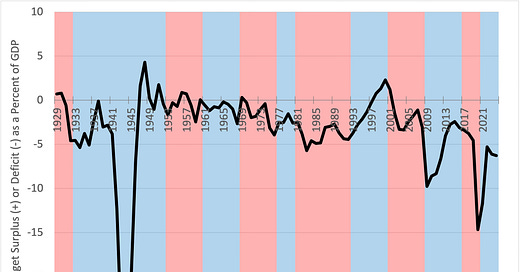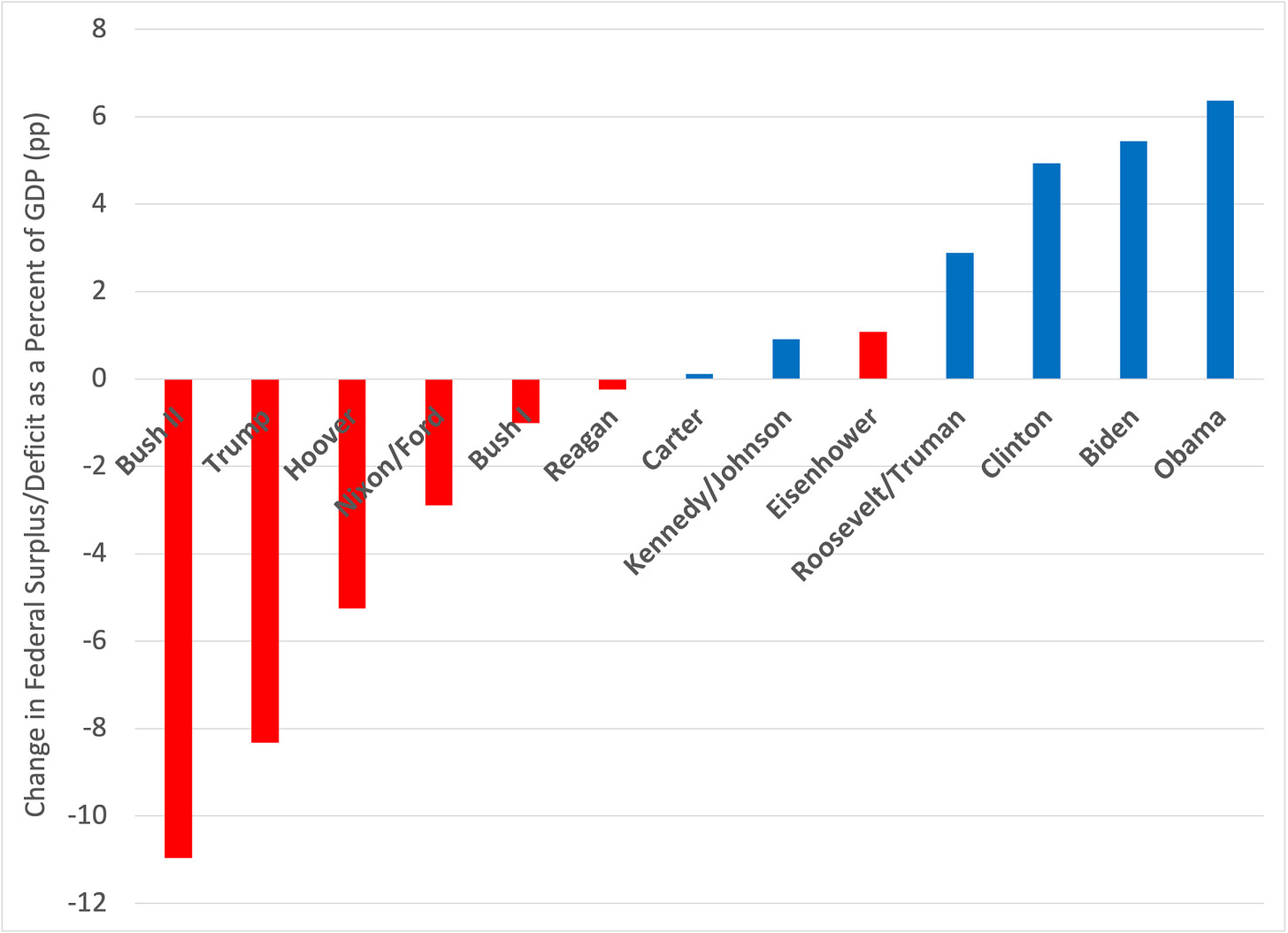The Republicans in power have big plans. They’re talking about big spending cuts and big tax cuts. We don’t know yet how much will happen or how those two sides of the equation will balance out. But you can be sure we’ll be talking a lot about the budget deficit in the months ahead.
Let’s remind ourselves how we got here.
First of all, this isn’t the biggest the deficit has ever been. Not even close. In 1943, it nearly reached -27 percent of our economy’s gross domestic product (GDP). But that was World War II, and it was temporary. By 1947, we had a surplus again.
From 1947 to 1974, we approximately balanced the budget, on average, with small fluctuations between deficit and surplus.
Persistent budget deficits began in 1975 under President Gerald Ford and continued through the Carter, Reagan, Bush I, and early Clinton administrations.
In those days, the deficit reached its largest size after the Reagan tax cuts of the early 1980s, peaking at -5.7 percent of GDP.
Bill Clinton famously reversed course with tax increases on the richest Americans, and the deficit turned into a surplus from 1997 to 2001.
George W. Bush reversed course again with tax cuts for the richest Americans, and the surplus turned back into a deficit totaling -3.1 percent of GDP in 2008.
The financial crisis blew it up to -9.8 percent of GDP in 2009, but the economy recovered and the Obama administration imposed some austerity measures. By 2016, it was back to -3.1 percent of GDP.
In his first term, Donald Trump doubled down on the tax cut strategy, and the deficit grew to -4.6 percent of GDP by 2019.
The COVID-19 pandemic blew it up to -14.7 percent of GDP in 2020, but again the economy recovered and the Biden administration brought it down to -6.3 percent of GDP by 2024.
So, it’s less than half of what it was at the start of Joe Biden’s term, it’s slightly bigger than it was during the Reagan years, and it’s substantially bigger than its historical average (-3.5 percent) from 1980 to 2020.
To get a sense of what policies lead to what outcomes, I calculated the change in the surplus or deficit from the first year of each presidential administration to the first year of the next administration. I think it’s fair to assume that the next president is stuck with some of the decisions that their predecessor made and they can’t fix the budget overnight. So, we can attribute that first year partly to each.
I also combine presidents when they die or resign and hand over the office midstream to another member of their own party, so that we’re comparing full presidential terms apples-to-apples.
Here’s the scorecard:
In sum, from Herbert Hoover to Donald Trump, every Republican president except Dwight Eisenhower has increased the budget deficit, and every Democratic president from the Roosevelt/Truman administration to Barack Obama has reduced the budget deficit.
And if you think I should have calculated each president’s contribution by subtracting the last year of their term minus the last year of the previous president’s, here’s what that looks like:
Not much different. All those tax cuts add up — and leave deficits for the next president to clean up.
Maybe this time it will be different. Maybe not. We will see.





